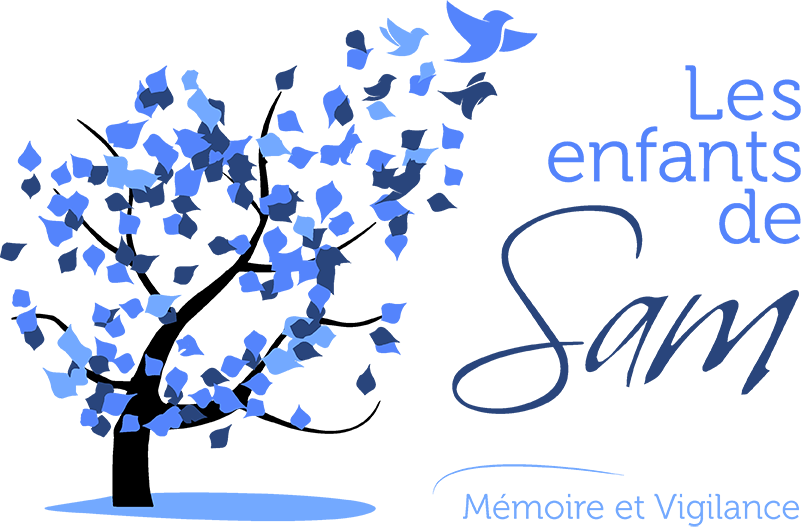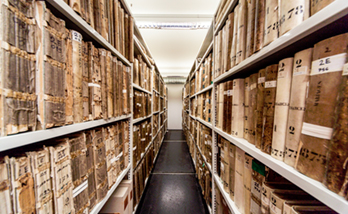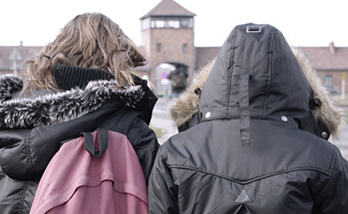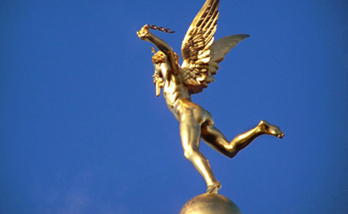Memories of the Second World War
The singular objective of this section is to feature academic references about the period, to provide links with specialist sites and to highlight publications with new perspectives or information.
The Nuremberg trials do not mark the end of an era, but a new beginning.
The Nuremberg trials do no mark the end of an era, but a new beginning. By the very nature of the events dealt with at Nuremberg, what we learn should remain open to challenging the usual assumptions and to constantly call for a rebellion of the spirit.” This is based on a statement by G. Bensoussan.1 That is, it is worth identifying community challenges in teaching about the Holocaust. Such teaching is usually developed using a title such as “the Nazi extermination of the Jews and the Romani people – a crime against humanity”. With such a title we must have a definition of a crime against humanity, especially with the industrialised, systematised murder perpetrated by the Nazis and their collaborators. Moreover, since the end of the Second World, the meaning of this concept War must be interrogated, together with its power at the centre of International Law in relation to other war crimes, in all scenarios of war. In this regard, it is especially important to inform and raise awareness of future citizens by providing them with tools to consider what happened. It is also to enable them to identify, reject and fight all forms of discrimination and associated abuses (verbal, emotional, physical). Learning must best define the historical goals (to understand the facts) and societal goals (to build community awareness). This educational position must allow for a combination of past and present, of history and remembrance. It must also integrate interdisciplinary approaches (history, ethical and civics education, humanities, philosophy and the arts – both the physical arts and history of the arts).
Such learning should also include several fundamental objectives :
1/ To provide historical context and broaden perspectives :
This encompasses examining the history of Europe prior to the Second World War. To learn in historical depth about the origins of racism and anti-Semitism, as well as the rise of totalitarian ideologies. It also concerns post-1945, when Europe looked for a way towards reconciliation and began to write a new page in its history – to end war and violence in Europe in the context of the Cold War.
2/ To implement a cultural approach :
These lessons must be seen as an opportunity to highlight the richness and diversity of human societies, to teach about difference and respect for all cultures.
3/ To go beyond images :
It is impossible to represent portray mass murder. Beyond the painful images in photos and film, what is seen by young children and adolescents risks their becoming immune to horror. It does nothing to help their understanding of mass murder.
4/ To move from the individual to the general :
To use the stories of survivors of the camps as a resource, in the classroom or through video testimonies
Teaching about the extermination of the Jews and Romani people as a fact of history
Concerns about the idea of crimes against humanity are first and foremost around historical recognition and implementation of several basic chronological criteria. However, these crimes cannot be confined to the distant past, far from the present-day and future generations. To do so risks trivialising such crimes in light of the numerous tragedies that have occurred throughout the history of humanity – events that have been or will be studied in history courses. So the historical approach must, to use the words of G. BENSOUSSAN, demonstrate that the industrialised extermination of the Jews and Romani people is not so much a unique event, as something unprecedented in its nature and dimension. Although it is in the context of other past tragic events (for example, the pogroms in Russia between 1881 and 1884, together with the Armenian genocide between 1915 and 1916) it requires us, above all, to analyse the underlying historic anti-Semitism in European societies.
1/ Understanding the forces that lead to extermination
These forces not related to any rationale of war, nor any territorial issue or threat that could have justified such destruction. It proliferated at the same time as military conquests, and the war was both an accelerator and a useful smokescreen. We must also understand the ideological dimension of this genocide. The Jews were murdered as part of a plan that a section of humanity was to be eradicated from the earth. The plan began with the whole of Europe, and was the the genocidal wish of the Nazis. It was rooted in the foundations of the Nazi ideology of its leader Hitler (Mein Kampf) and his henchmen. The result was a slow process of marginalising the Jews and establishing the myth of Jewish conspiracy which had its roots in centuries-long-held attitudes in Europe. This perspective causes us to critically examine the limitations of the ideals of the Enlightenment – which Germany must have resisted – and also focuses on the collapse of democracies in the face of the Nazi menace.
2/ To provide a basic chronology
The story must lay the groundwork to remove extermination from the context of war and explain the era when the first anti-Jewish measures were enacted in Germany. These rapidly spread to annexed and defeated territories (see the chronology of annexation). It is necessary to then look at how the process was accelerated from 1942 (the conference of Wansee, the first convoys of deportees and the Vel d’Hiv round up in France), until the liberation of Auschwitz on 27 January 1945.
3/ To analyse the compliance and participation of ordinary people in the process
This question continues to weigh on the German conscience and that of all of Europe. How could a world of ordinary people be complicit and participate in these crimes? How did they violate moral and ethical principles before donning the uniform of the murderers? The answer focuses on the possibility of a ‘breakdown of the ancient structure which held the Jewish people in the image of the eternal victim … and reduces the Jewish identity to anti-Semitism” 1 It questions the sophistication of our cultures and governments. The mass murder that resulted from a well-organised plan, in Germany and collaborating states. A plan which even involved ‘trialling’ systems to perfect their methods which were then accelerated by government administrations. It divided responsibilities into many ‘mundane’ tasks to be completed, tasks that drove millions of people into mass graves and death camps. For each murder, moral standards were corrupted and expunged in order to either carry out such abominations, or to stand passively by as they were committed. Certainly ideological propaganda contributed to this moral corruption, and made it easier for individuals to ignore their conscience to participate in such a collective path to murder. This was achieved by making obedience, discipline and allegiance to the superior group to be of upmost importance. It also permitted the usual moral restraints to be ignored in order to commit these crimes. “Conformism, a feeling of consensus and group pressure all played a crucial role in mass murder.”2 In such an observation of the erosion of moral conscience we must also consider the desensitising effect of the violence, mass destruction and death during the First World War
To embed teaching in the present
Teaching about the extermination of the Jews and the Romani people must also contribute to the teaching of critical thinking. It is part of our present, and as such it challenges the progress of our cultures. Such progress allowed for the destruction of a part of humanity. This kind of scheme could then extend to any group, as humanity itself was destroyed in Auschwitz. However, with the intention of understanding the world and maintaining vigilance, we could overestimate the educational challenge in relating the context of the present, and establishing links with current situations, as difficult as they are commendable. This can lead to an inappropriate use of the term ‘genocide’. There are risks for confusion or exploitation or misappropriation. On the other hand, the intense presence of such a reality, of course we think of the Middle East. This leads to paradoxical situations facing the risk, real or imagined, of the reactions of some students. Circumstances which can legitimise teaching about the Holocaust to guard against this risk. Educational goals can be limited because of concerns about opposition and resistance from students. In addition, some share a concern with regard to possibly ‘overwhelming’, not just the students, with regard to how extermination is dealt with. It is useful to foresee all these risks to reduce the likelihood of them occurring and to be clear on very precise educational objectives. The only sentinel guide “Never again”, should not prevent us from transparent and honest analysis of the past, which means, Never again… “that”.
1/ Encouraging remembrance for the purpose of history
When speaking of our legitimate duty to never forget, it is important to remember, as Jean-Pierre RIOUX said, that students in schools must not be made to carry the burden of these crimes. They are innocent of these crimes and making them, “in the name of a loyalty to memory, new witnesses for the witnesses who have died, participants by proxy or those who were righteous.”1 With this philosophical approach the duty to remember is associated with an imperative of history, to ‘know’ or to ‘recognise’, in order to impose the universality of values of the human race and the imperative of the Law. In this way the story of the survivor, no matter what form it takes, must be a work of history. From the outset, the industrialised genocide of the Nazis was accompanied by mechanisms to erase all traces of their crimes (construction of purpose-built camps, the removal of corpses from mass graves and removal of evidence in the form of camp records). The cover-up that any crimes were committed paved the way for subsequent Holocaust deniers, still at work in our society today. The word of the eyewitness is, with authenticated accounts of history, the cornerstone of truth and reason against such organised falsehoods. Nevertheless, both have to put aside any approach that includes emotion or compassion in the face of suffering, at risk of rejecting in the past and elsewhere the very presence of genocide and what caused it.
2/ To not fear being comparative and to fight the relativism of words and situations
Having a historical perspective allows us to build an instructive comparative approach to challenge all forms of violence of the century by identifying their specificities. Here we return to our original inquiry, to try to avoid including or underplaying Nazi crimes in the context of other horrific events throughout history. To not culminate in an altered historical account in speeches that moralise and advocate tolerance and vigilance. So, what must be done is to undertake precise work on all the wording on war crimes and crimes against humanity and on genocidal massacres. We must also identify xenophobia, racism and anti-Semitism, in addition to everyday terminology and ideas which lead to confusion and generalisations.
3/ To open our eyes
These lessons must not fall into the dark pessimism of the 20th century or accept the inevitability of a taste for aggression and violence in human nature. Light existed in the darkness. In the name of the irrefutable values of humanity there were individuals who responded and resisted, in whatever way they could, to denounce and oppose these crimes. Such values transcend time and place. Their universality must emerge from this study on society, which is also a study about ourselves. If possible, we should combine critical thinking as an inherent part of every history lesson. Providing a critical awareness about the world around us, and to be vigilant for the possible return of barbarity, cannot just be reduced to the sum of knowledge and critical awareness so patiently developed as part of our so-called culture. Furthermore, we must understand that cultural diversity is the very essence of humanity.
Jean-Pierre Lauby
2009
Bibliographie indicative :
- Georges Bensoussan, Histoire de la Shoah, P.U.F. collection Que sais-je ?, 1997
- Jean-François Bossy, Enseigner la Shoah à l’âge démocratique, Armand Colin collection Débats d’école, 2007
- Michel Winock, La France et les Juifs de 1789 à nos jours, Seuil collection U.H., 2004
- Revue l’Histoire, numéros 185 « Auschwitz – 1945 : la révélation », 214 « Le racisme : des origines aux génocides du XXème siècle », 269 « L’antisémitisme »
- Collectif sous la direction de Francine Cicurel, Anthologie du judaïsme, Nathan-Fondation pour la Mémoire de la Shoah, 2007
Notes :
- 1 Georges Bensoussan, Histoire de la Shoah, P.U.F., Collection Que sais-je ?, 1996)
- 2 G. Bensoussan, Auschwitz en héritage ? Du bon usage de la mémoire, Mille et une nuits, 2006
- 3 G. Bensoussan, op. cité
- 4 J.P. Rioux, Connaître, premier devoir, Conclusion de la journée d’étude organisée par l’Amicale des déports d’Auschwitz et des camps de Haute-Silésie, lycée E. quinet, 30 novembre 1996



